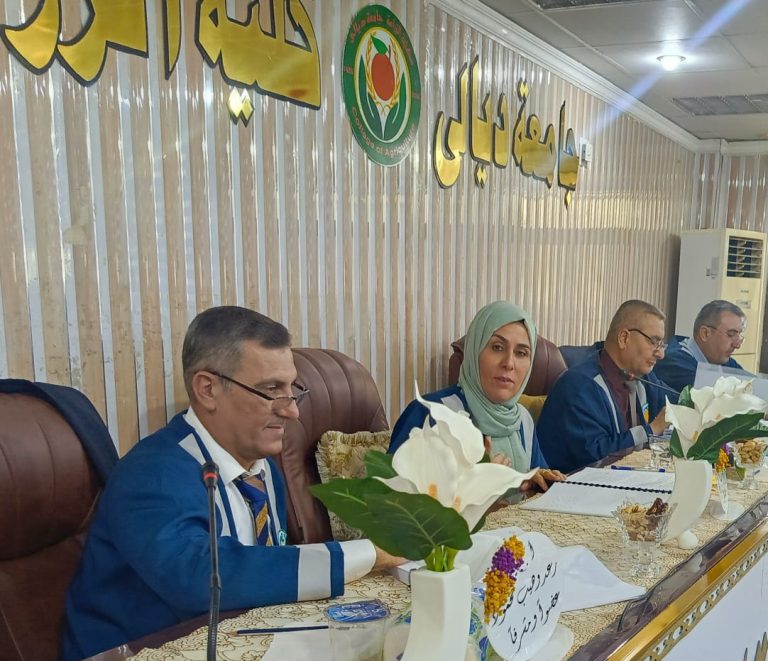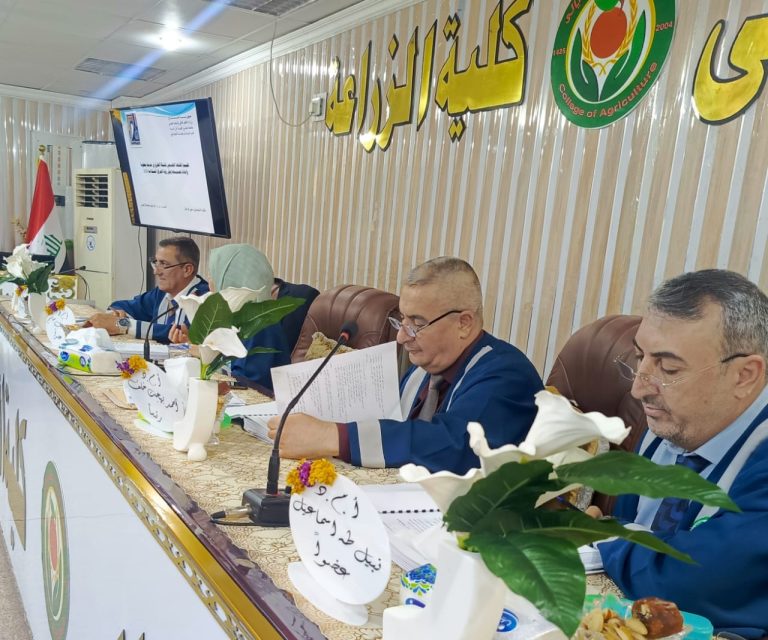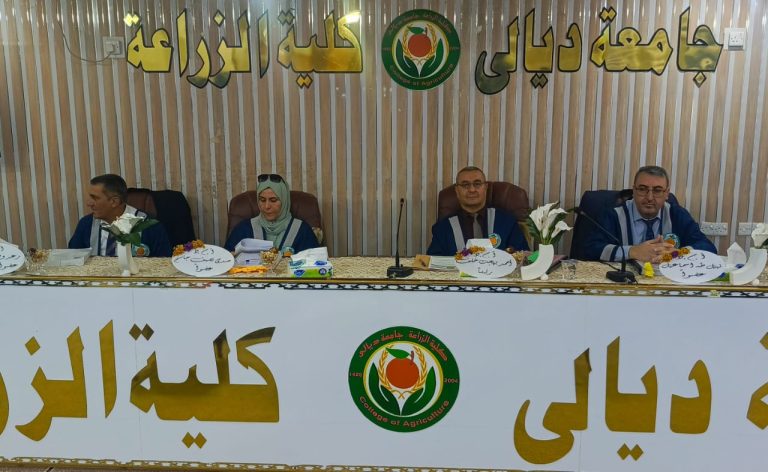A master’s thesis at the College of Agriculture focused on “Evaluating the Landscape of the Road Network in the City of Baqubah and Redesigning It in Line with Iraq’s Sustainable Vision 2030

The College of Agriculture at the University of Diyala discussed a master’s thesis entitled “Evaluating the Landscape of the Road Network in the City of Baqubah and Redesigning It in Line with Iraq’s Sustainable Vision 2030.”
The study, conducted by Saja Farhan Thamer, comprised two primary aspects: the theoretical and the practical. The theoretical component focused on definitions and general concepts related to roads, sustainable road networks, urban river roads, and sustainability standards. The practical aspect involved selecting Khuraisan River Street as a case study. This street, classified as an arterial urban river road with a commercial and organic layout, runs through the city center, covering a length of two kilometers—from Khalil Pasha Bridge to Abu Idris Shrine. Its selection was due to the street’s scenic riverfront location, commercial significance, and aesthetic appeal within central Baqubah.
The study yielded several key findings. The research site suffers from neglect and high levels of pollution in air, water, and soil, accompanied by a decline in tree cover from 1990 to 2023. Over three decades, the level of greenery and tree planting diminished due to inconsistent vegetation coverage, lack of attention to afforestation, and insufficient maintenance. Furthermore, pollution levels at intersections in the study area were found to be significantly above global thresholds, largely due to the high volume of vehicular traffic.
The street furniture was found to be in poor condition: municipal fixtures were either neglected, broken, or entirely absent, while the fixtures installed by private investors—mainly restaurant owners—were of poor quality. While lighting was available along the street, it was absent in certain sections (specifically Area C). Additionally, large metal waste containers were scattered along the middle of the street. The research also identified that the entire street network represents a heat island, with heat intensity particularly pronounced at intersections and in areas lacking vegetation. Furthermore, there were no existing urban planning or municipal development plans for the site under study.
The study issued several recommendations, including:
-
Raising public awareness about sustainability laws and encouraging adherence to them.
-
Adopting localized sustainability standards tailored to the environmental conditions, social values, and economic realities of the community in the study area.
-
Developing a guide for sustainable urban street planting to serve as a reference for municipal workers and urban planners. This guide should identify the most suitable plant species—particularly native species—that can withstand heat, salinity, and other climatic challenges.
-







